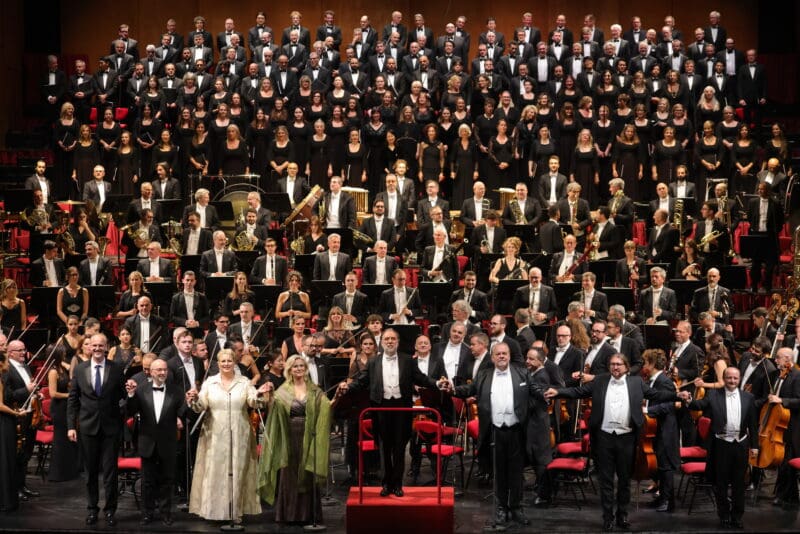Conductor Riccardo Chailly closes Teatro alla Scala’s Symphonic season with a detailed and impassioned performance of Schönberg’s remarkable cantata, Gurre-Lieder.
Teatro alla Scala’s symphonic season closes with Schönberg’s Gurre-Lieder, superbly conducted by Riccardo Chailly, and passionately sung. Pivoting between post-Romantic excess and contemporary experimentation, it’s a score that in many ways suits Chailly down the ground, and throughout he was formidably alert to the complexities of its soundworld. Yet, all the while steeped into its dramatic vehemence and metaphysical glory.

Photograph: Brescia e Amisano
Gurre is the name of the castle where Tove—the woman loved by King Waldemar and killed by the poison of his jealous wife—resides: a love affair and wrathful death that dominates the first part of this work is followed in the second part by Waldemar’s rebellion against God, and then by the exhortation (also through the voices of a peasant and the jester Klaus) of the nocturnal wild hunt to which the king and his knights are doomed.
Eventually, the sunrise dissolves the nightmare. Schönberg conceived the entire cantata compositionally between 1900 and 1901, but in 1903 he interrupted the instrumentation at the beginning of the third part. He resumed it and finished in 1910. The first performance was conducted by Franz Schreker in Vienna on February 23, 1913, to triumphant acclaim. Milan’s famed Teatro alla Scala performed this work for the second time, more than half a century after their premiere in 1973 with Zubin Mehta on stage.
Thought-provoking textures dominate the opening, as the affair between Wadlemar and Tove encompasses both a sheer awareness of transience and its troubled nature of a desire to transcend the grave.
The clatter of the then spectral journey was utterly thrilling, though Chailly’s ear for detail also allowed us to love Schönberg’s musical complexity at this point rather than let the passage decay into a racket. The Wild Hunt of the Summer Wind, however, in which the Romantic aural panoplies fade and fall as down rises, was remarkable in its crystalline evocation of a new sonic world.

Photograph: Brescia e Amisano
There were, in part, inconsistencies in the vocal parts of the performance. Camilla Nylund’s range can be thrilling, but her tone can also be steely. Andreas Schage’s opening piece lies quite low for a tenor, and he seemed a little uneasy.
His voice soon settled and by the end, he was breathtaking, both in the anger of his imprecations against God, and the rapture of his steadfast desire for Tove. The combined forces of Teatro alla Scala’s choir (conducted by Alberto Malazzi), and the choir of Des Bayerischen Rundfunks (conducted by Peter Dijkstra) sounded formidable, with a slightly uneven tempo in the very last section of the cantata.
I’m not sure we needed an interval, which somewhat breached the momentum. The narration, too, spoken in German felt smooth in its context, delivered with considerable passion.
by Chidozie Obasi
